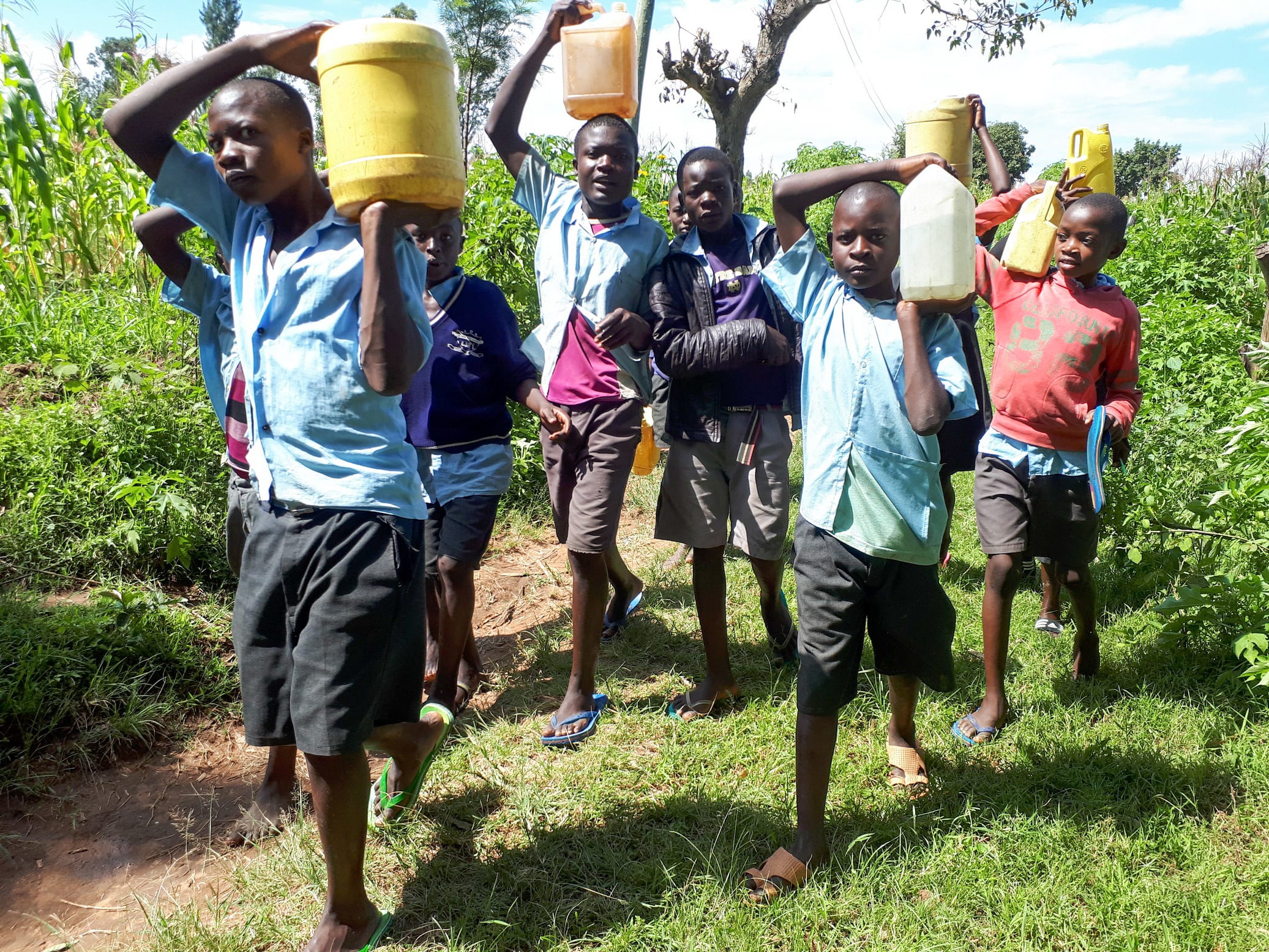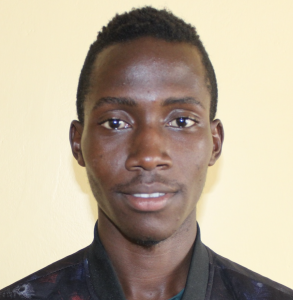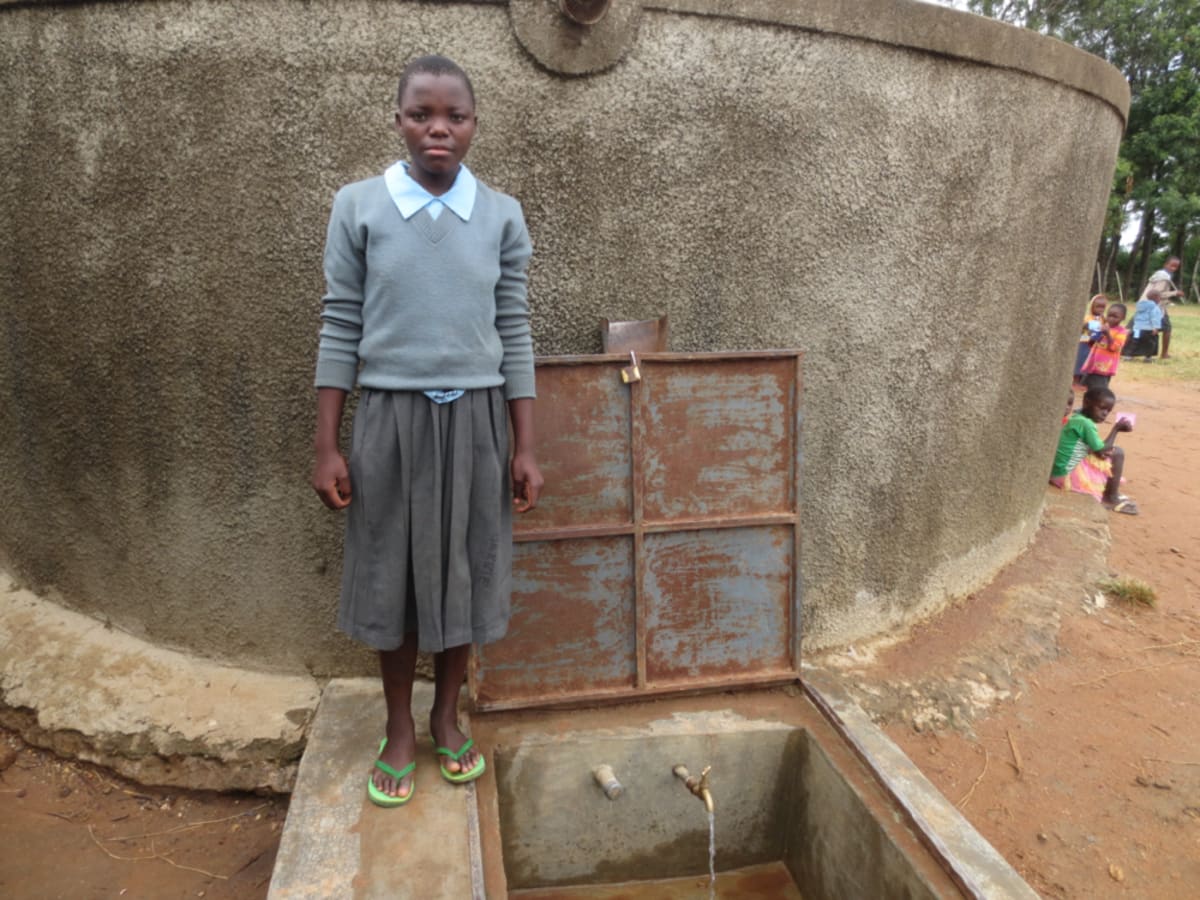It was a cold day when we first visited Namakoye Primary School since it had rained the previous night. Later in the day, it became sunny and this helped make our visit successful.
It took quite some time to get here from the main offices - about three hours total. Some of the roads are so muddy, rough and bumpy that only a motorbike can traverse them. This is a very rural area where the community depends mostly on farming sugarcane and maize to make a living.
Namakoye Primary School was started in 2009 by community members who didn't want their children walking miles to school. The school has grown from an enrollment of 90 pupils in 2009 to 710 pupils now. The school has a total of eight classrooms of which some are still under construction. Despite that, students have to use all the classrooms because there is not enough space for all of them. The teachers even sacrificed their staffroom to the early education children who were learning outside without a classroom.
Throughout all of this growth, the school has never had a source of water for its students.
Students have to walk out into the community to find water, and the closest source is a spring located more than one kilometer away. The pupils get tired because of the long way to the spring; so much so that they have a designated place to rest each trip so that they can make it back with their heavy water containers.

This spring runs to the surface adjacent to some maize farms. Its water is not safe for drinking as it is completely open to contamination. The pupils step in the water and fetch it at the same time - further contaminating the source!
When students return from the spring, drinking water is stored 20-liter jerrycans in the school kitchen. Some are also left outside because the kitchen is small and the school cook is afraid the plastic containers will catch fire. The water is not treated and pupils often drink it directly from their own small jerrycans.
After drinking this water, students are often absent from school dealing with typhoid.
"Water is everything and it's what determines how healthy we are," said Joselyne Akwana, the school cook.
"It's what we use in doing all the domestic work at home, at school, and at work. The lack of water in this school has really affected the pupils because some of them choose not to come to school because they walk a long distance to fetch water and they get tired."
What we can do:
"The classrooms are dirty because there is not enough water to do cleanliness in school," continued Mrs. Akwana. "Instead it's done once per week and this has made many pupils affected with flu because they spend a lot of time in dirty and dusty classrooms."
Training
Training on good hygiene habits will be held for two days. The facilitator will use PHAST (participatory hygiene and sanitation transformation), ABCD (asset-based community development), CTC (child to child), lectures, group discussions, and handouts to teach health topics and ways to promote good practices within the school. The CTC method will prepare students to lead other students into healthy habits, as well as kickstart a CTC club for the school.
Handwashing Stations
There are no handwashing stations for students to use.
Two handwashing stations will be delivered to the school, and the CTC club will fill them with water on a daily basis and make sure there is always a cleaning agent such as soap or ash.
VIP Latrines
There are just two latrines for the boys and three for the girls. The latrines are not clean because of the water shortage.
"The school is in need of water and sanitation facilities because the population is increasing every year and it's becoming a challenge for the students to stay in class," said Headteacher Johnstone Nyongesa.
What's worse, five latrines means there's only one latrine for every 142 students.
Two triple-door latrines will be constructed with local materials that the school will help gather. Three doors will serve the girls while the other three serve the boys. And with a new source of water on school grounds, students and staff should have enough to keep these new latrines clean.
Rainwater Catchment Tank
A 50,000-liter rainwater catchment tank will help alleviate the water crisis at this school. The school will also help gather the needed materials such as sand, rocks, and water for mixing cement. Once finished, this tank can begin catching rainfall that will be used by the school’s students and staff.
We and the school strongly believe that with this assistance, standards will significantly improve. These higher standards will translate to better academic performance!

 Rainwater Catchment
Rainwater Catchment
 Rehabilitation Project
Rehabilitation Project






































